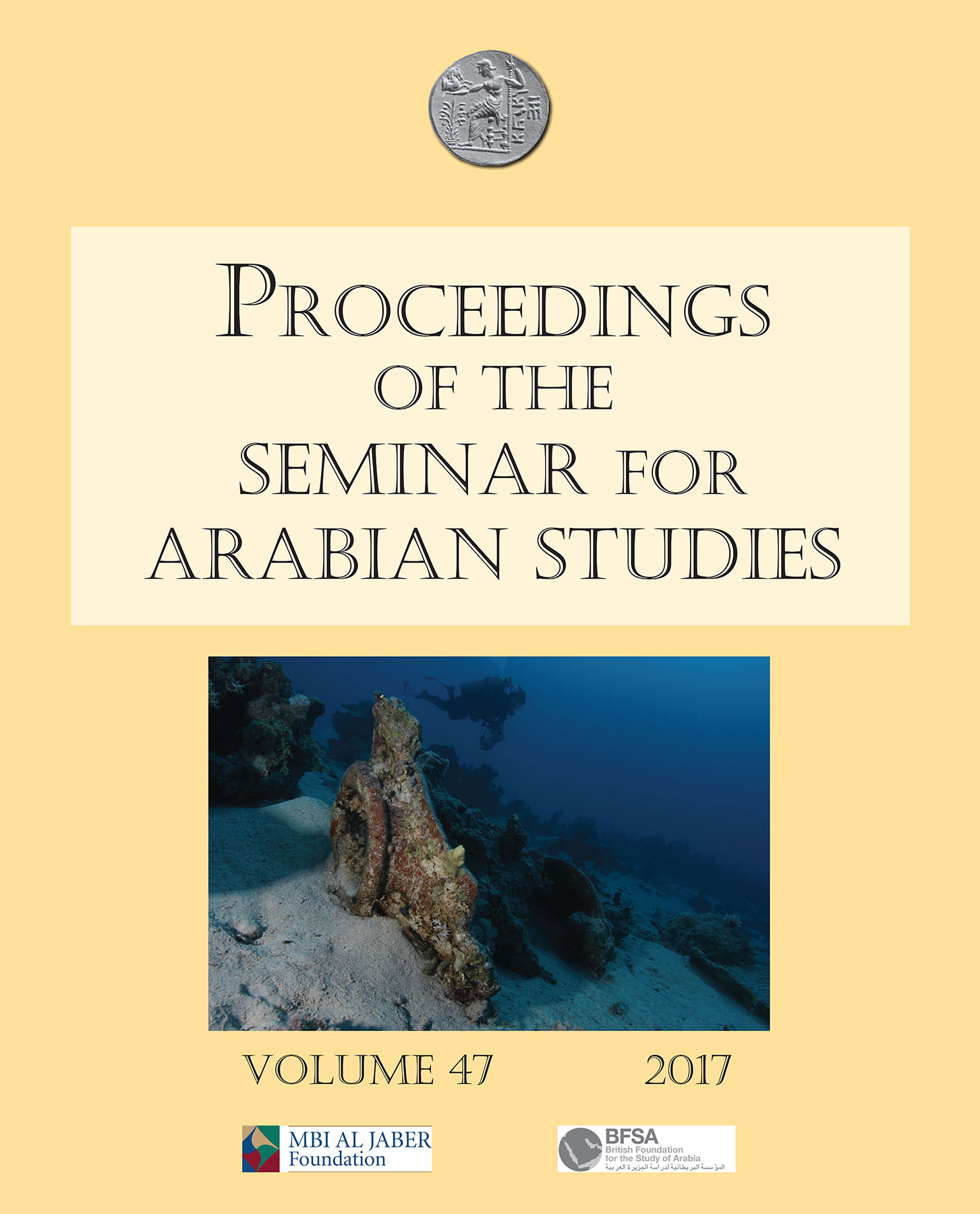A Crowded Desert: early results from survey and excavation of nomadic sites in north-west Qatar (poster)
Keywords:
landscape archaeology, desert settlement patterns, nomadism, sedentarism, archaeology of QatarAbstract
This paper presents the results and preliminary conclusions of the 2016 season of the Crowded Desert Project, which aimed to find out about nomadic occupation and its relations with settled peoples in the region. Activities included extensive and intensive surveys and excavations in the area delimited by the areas of Umm al-MāΜ and MulayΉa in the north-west desert of the Qatar peninsula. Conclusions so far complement and expand the ideas developed during the pilot season of the project in 2015, and also provide finer chronological detail and a wider coverage of the area of research than before. The distribution of glass, metal, and pottery recovered showed important chronological differences in the patterns of occupation of the landscape. The paper also presents observed differences in the spatial distribution of features, showing how cairns (presumably pre-Islamic tombs), Islamic burials and cemeteries, and mosques and places of prayer (sing. muΒallā, pl. muΒallayāt) are distributed with respect to the tents and spaces habitation found. Finally, this paper introduces the first stratigraphic and geoarchaeological assessments undertaken in the area. Stratigraphic sequences are hard to find, and often nothing remains of them around any preserved structures. In cases where some have been found, their interpretation is restricted by their poor state of preservation and the constraints imposed by small trenches. A geoarchaeological programme is being developed in the hope of overcoming these problems and providing environmental information that might be useful for the understanding of the history of the region
References
.
Published
How to Cite
Issue
Section
License
Archaeopress Publishing, Oxford, UK


